Chapter 8 Price Ceilings and Floors MODERN PRINCIPLES


















































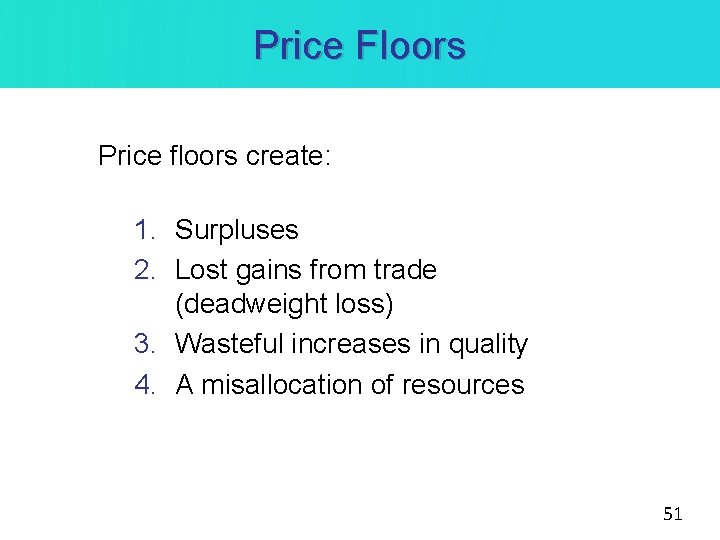
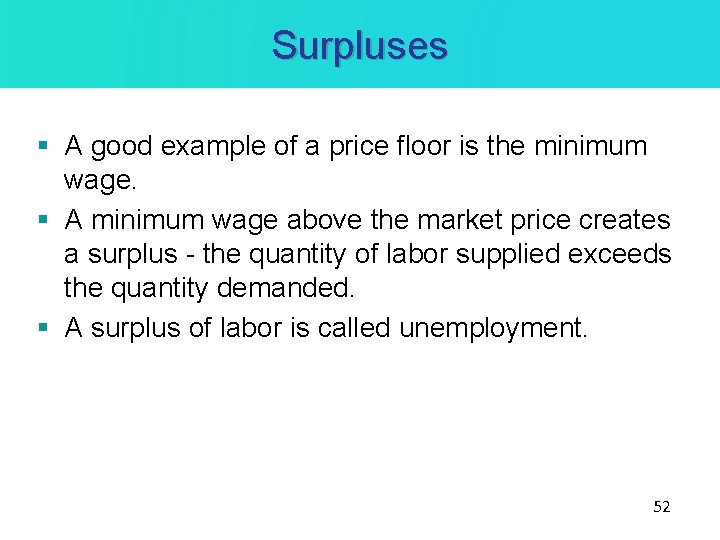
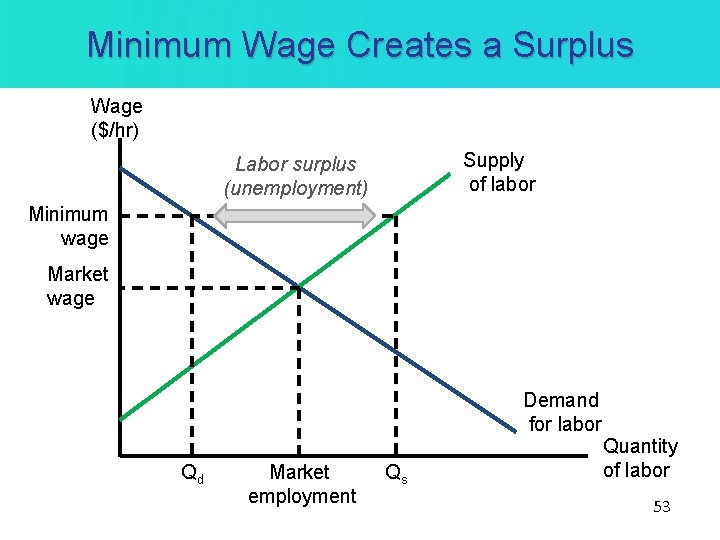
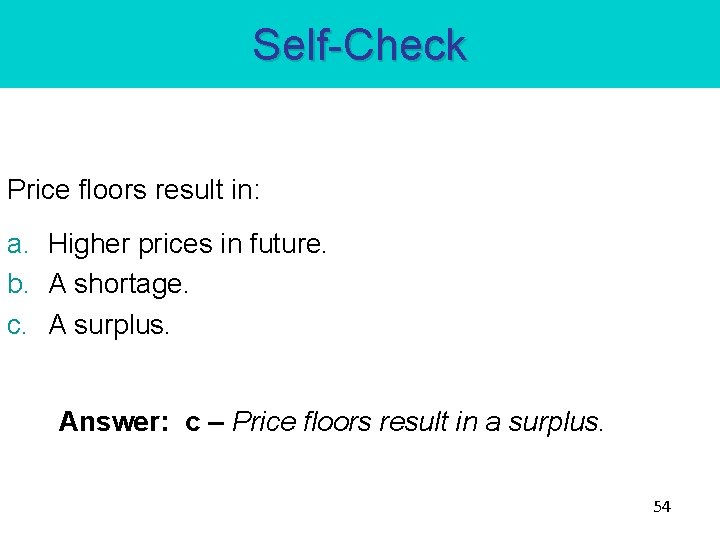
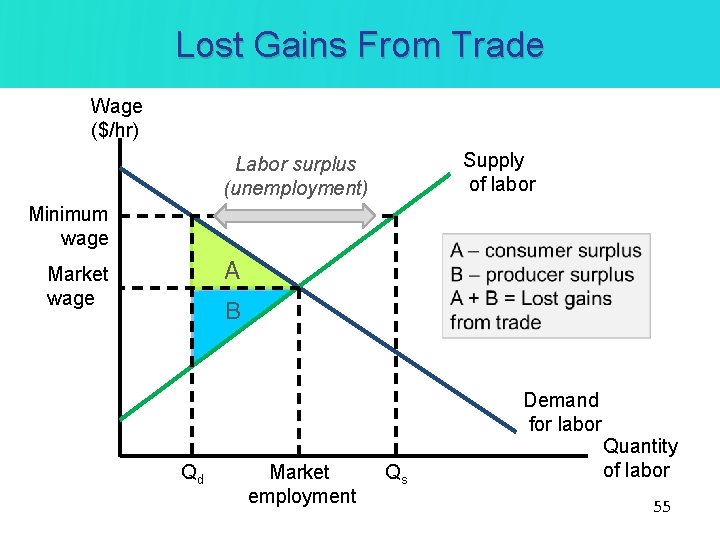
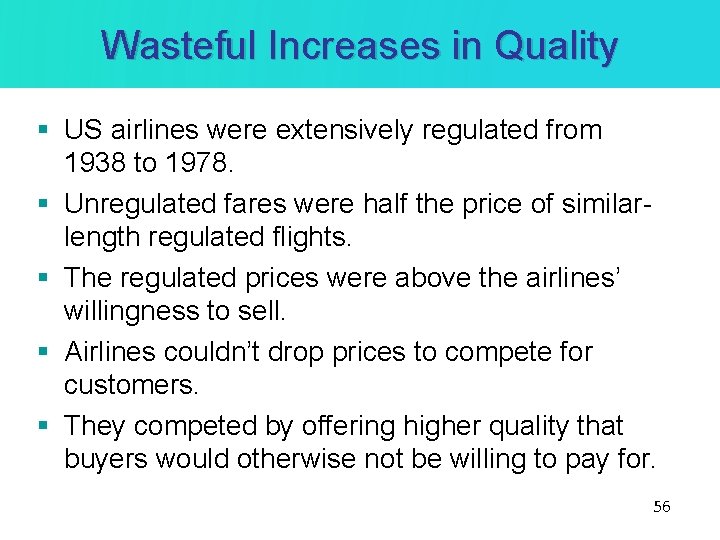
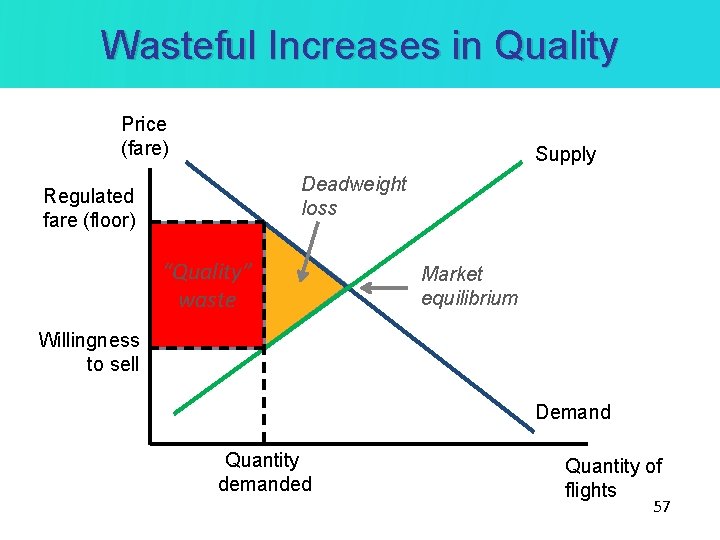
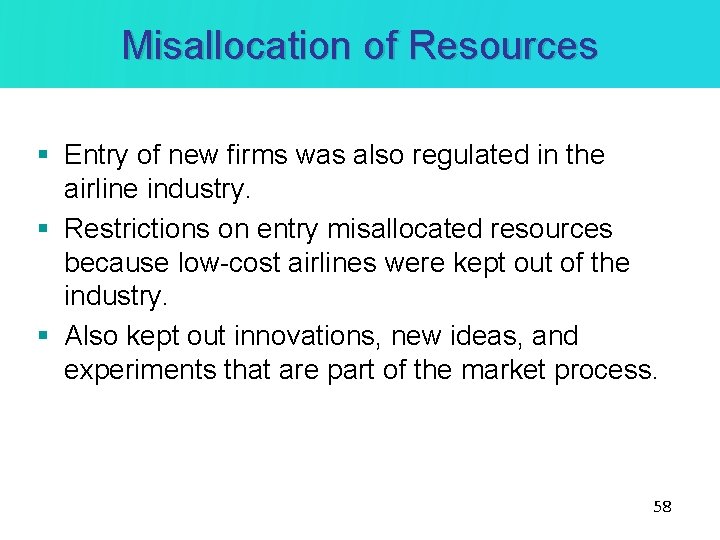
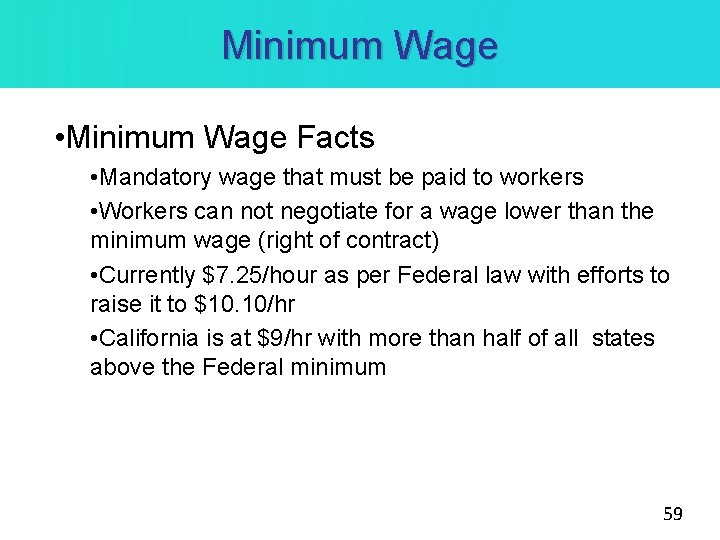
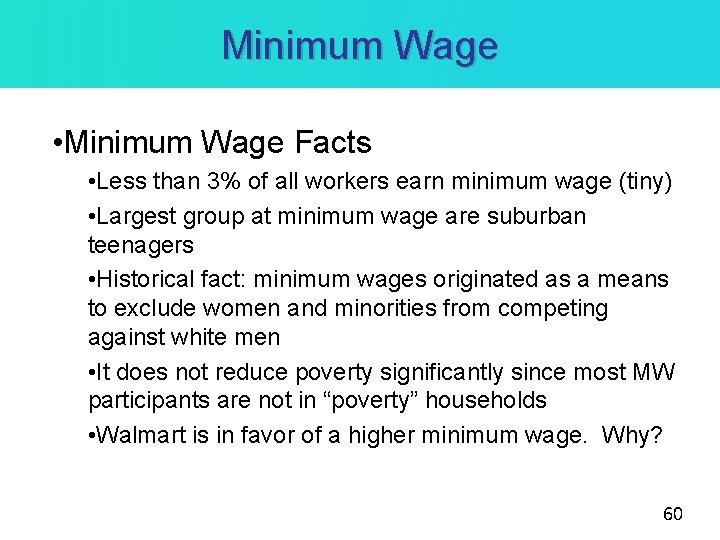
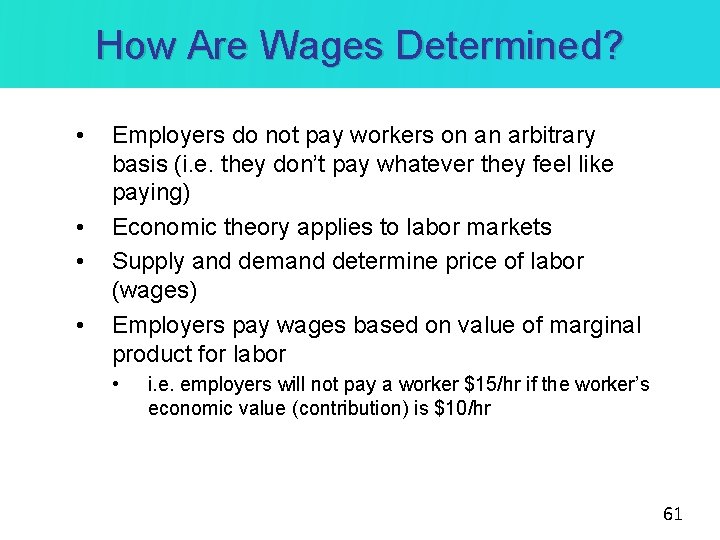
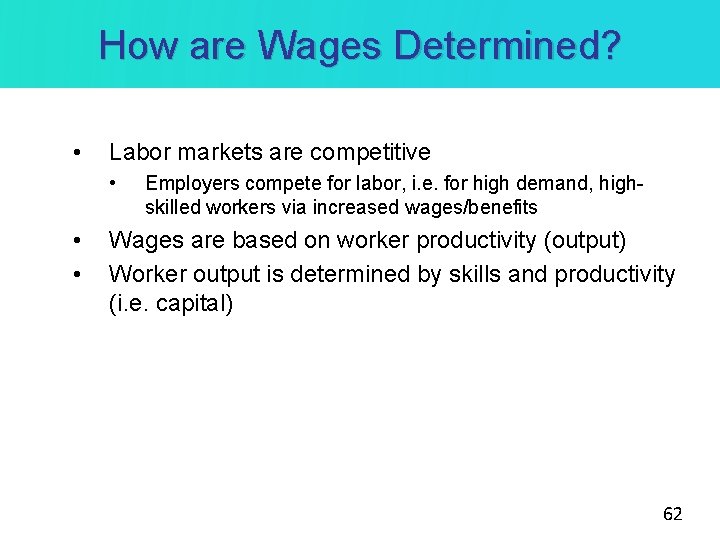
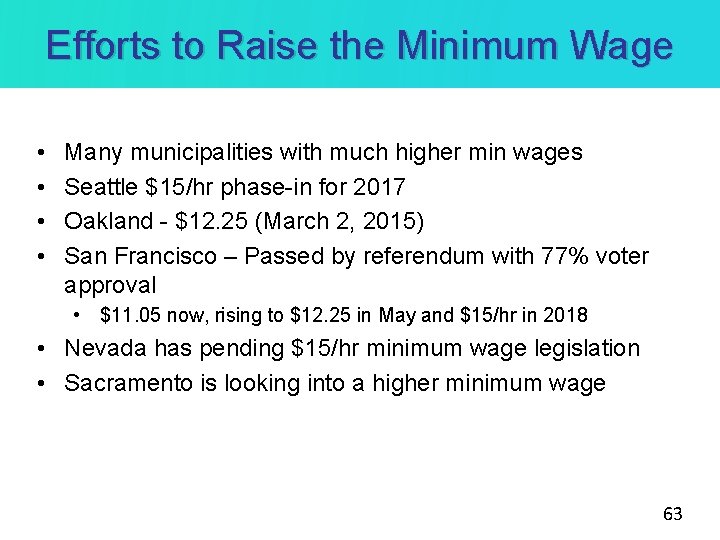
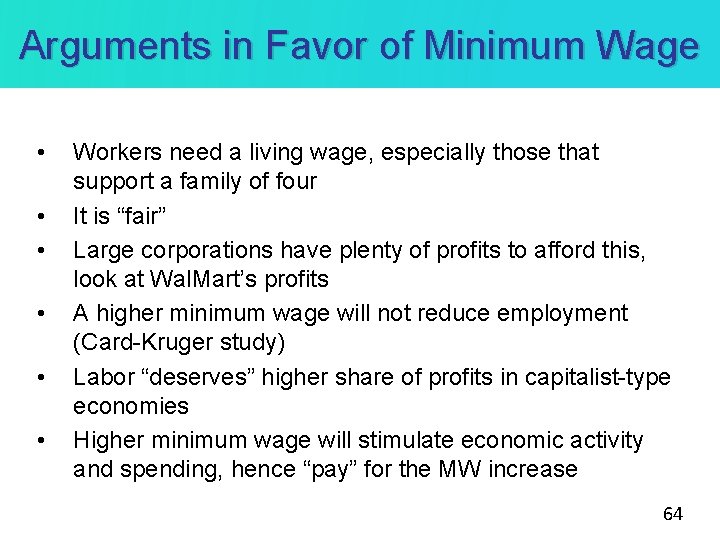
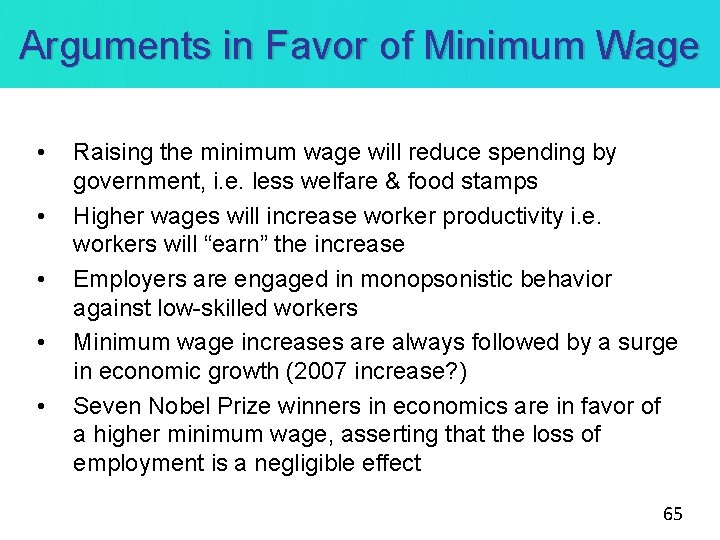
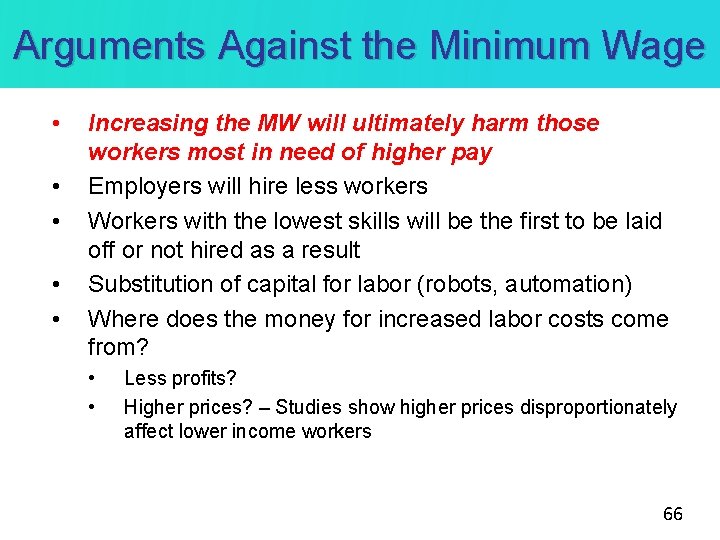
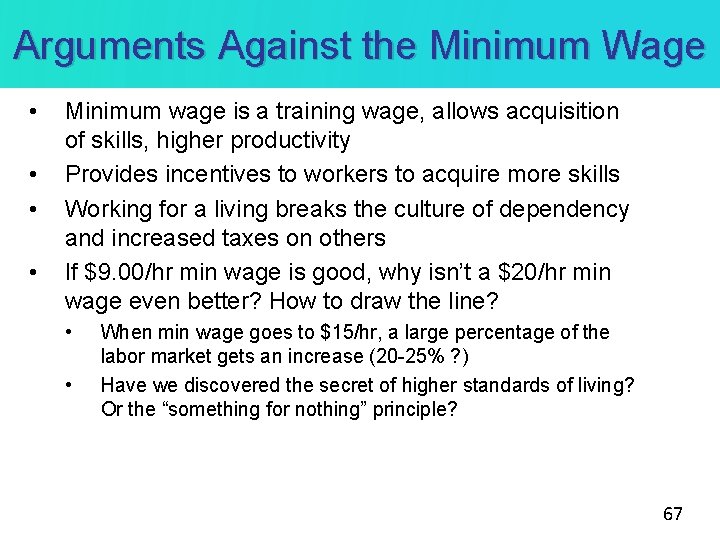
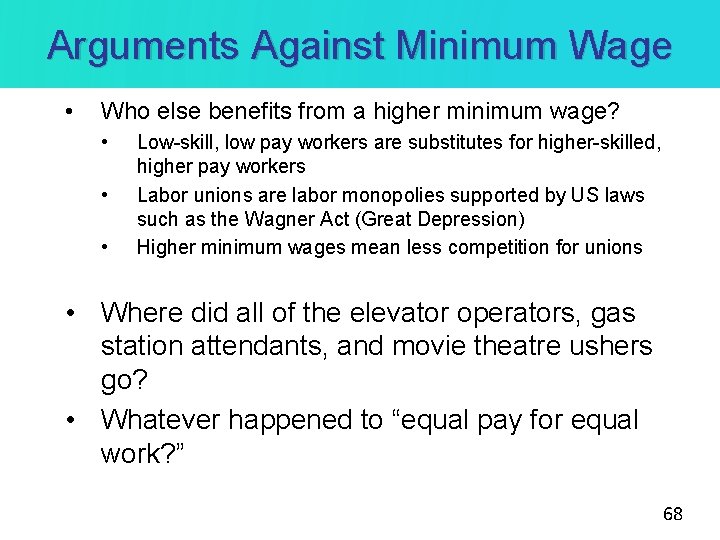
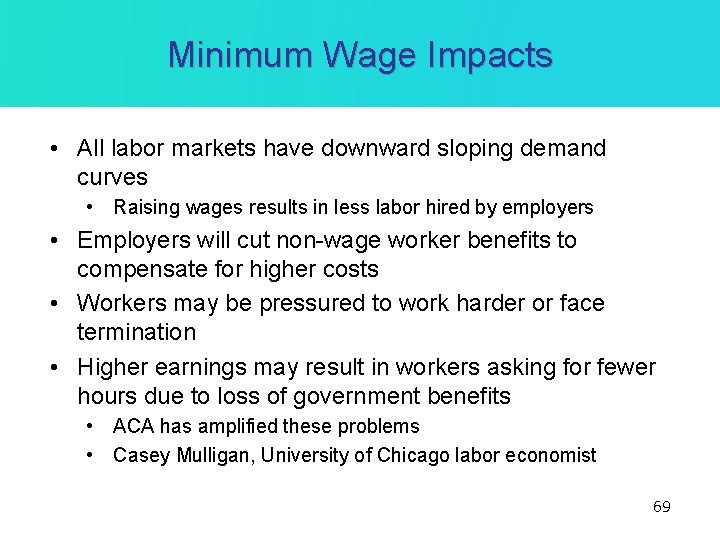
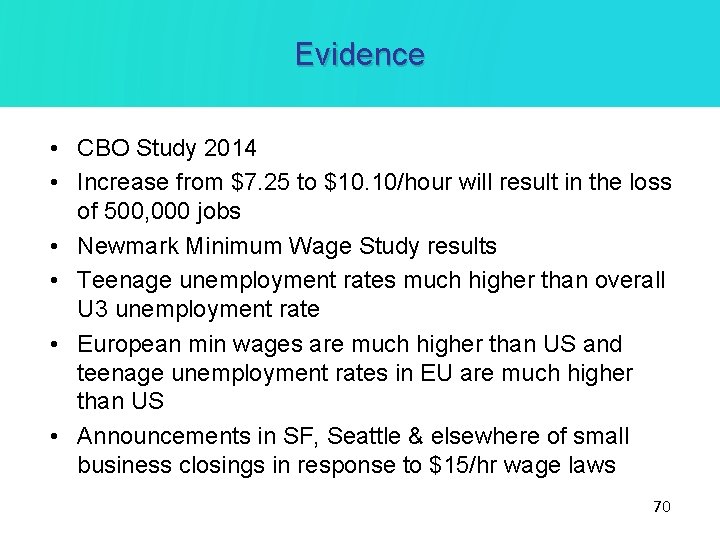
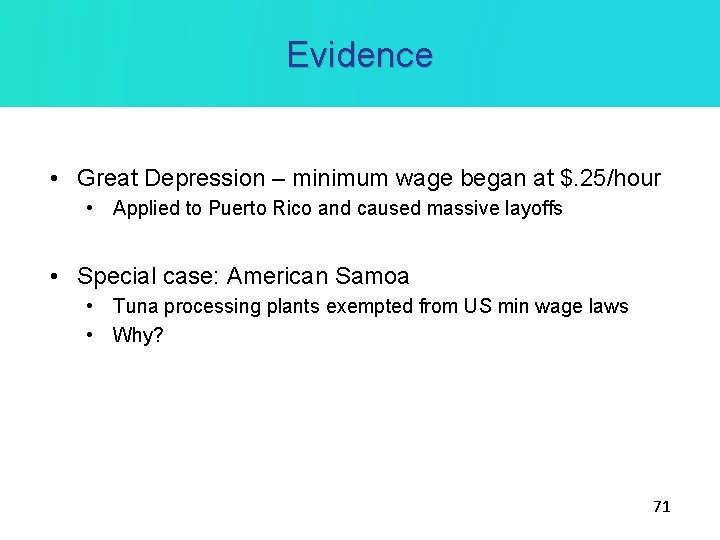
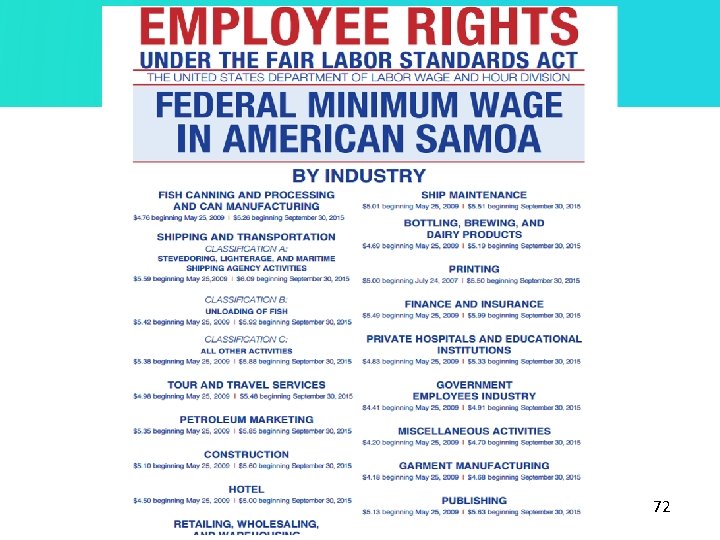
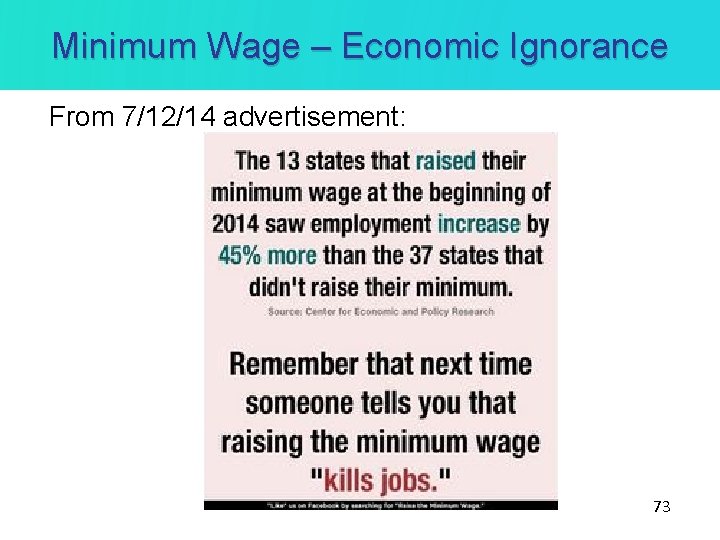
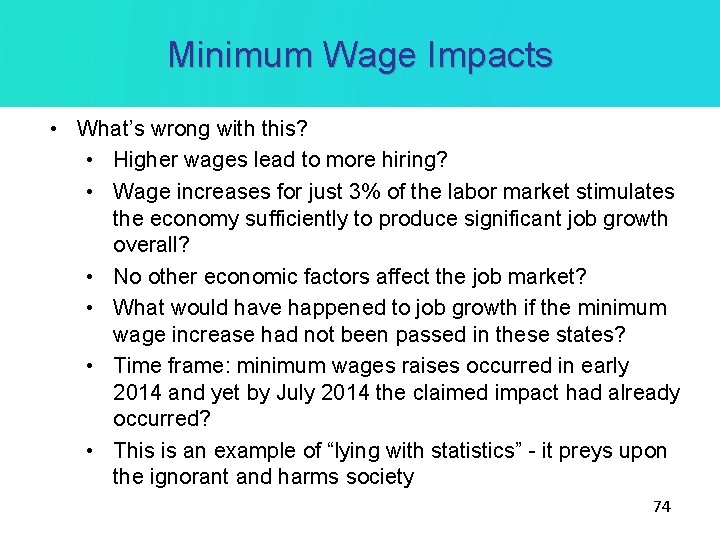
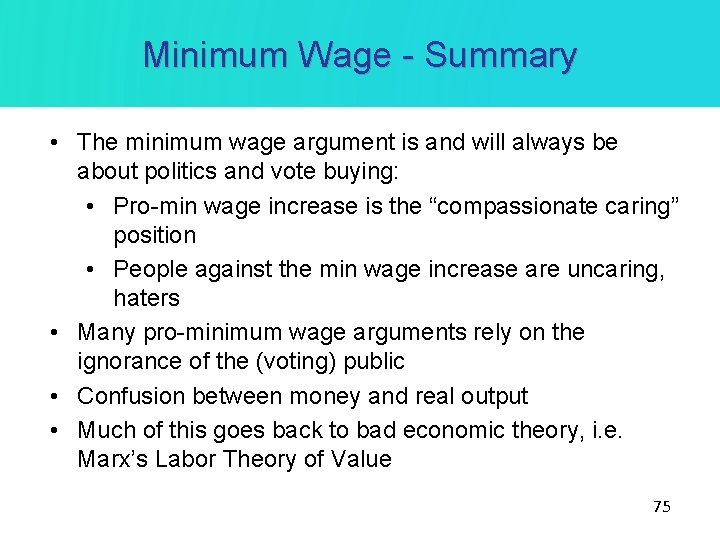
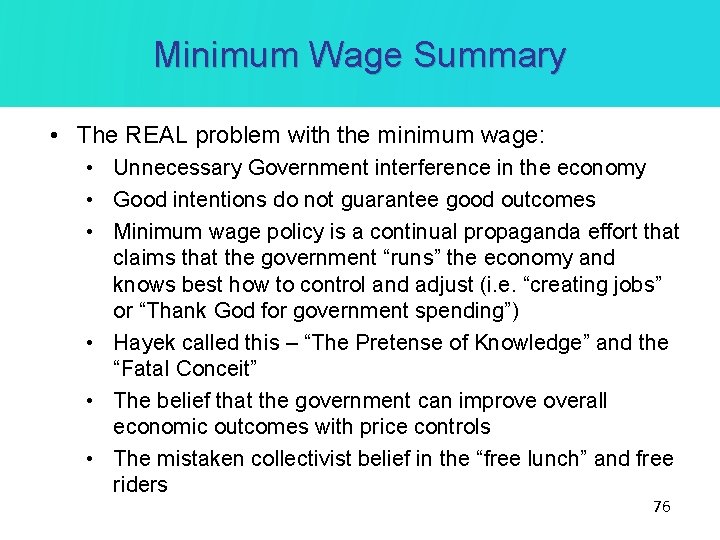
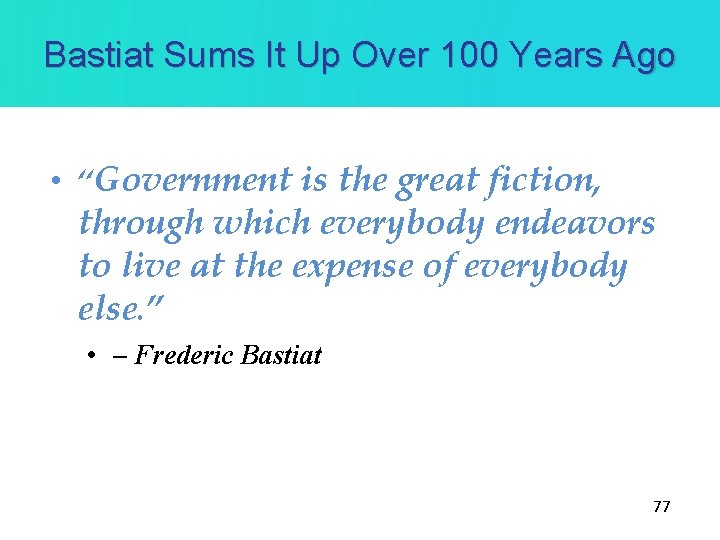
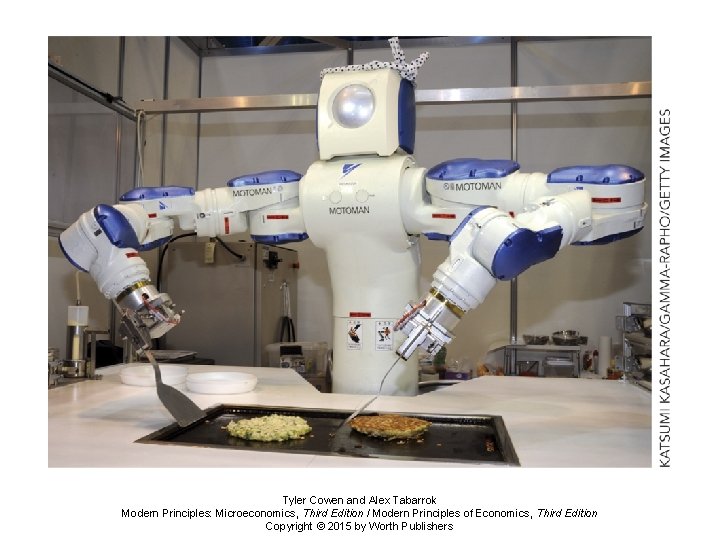
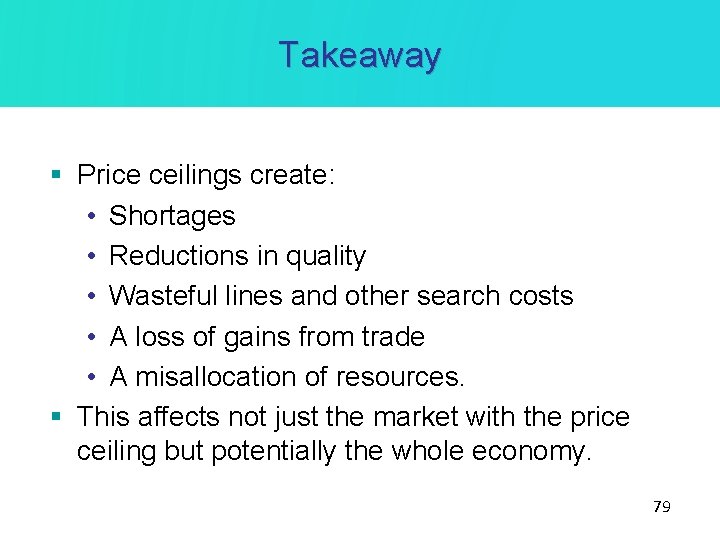
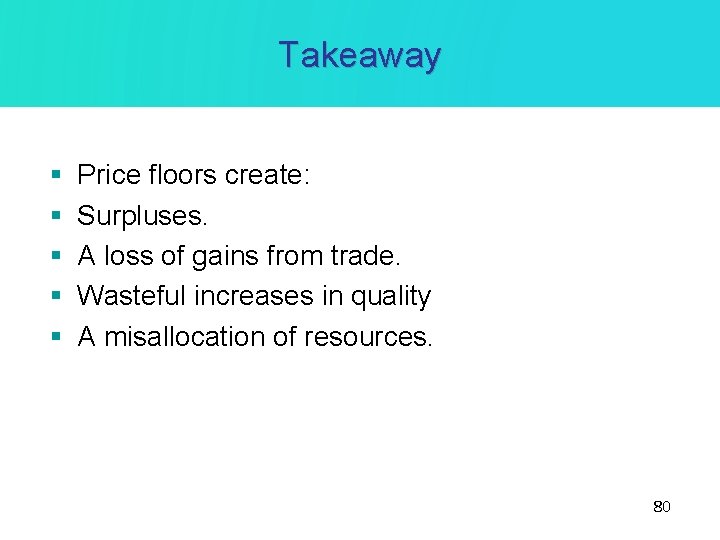
- Slides: 80

Chapter 8 Price Ceilings and Floors MODERN PRINCIPLES OF ECONOMICS Third Edition

Outline § § § Price Ceilings Rent Controls (Optional Section) Arguments for Price Ceilings Universal Price Controls Price Floors 2

Special Interest Groups 3

Gasoline at $. 05/Gallon

Getting in the Way of the Invisible Hand?

Introduction § Price controls are laws making it illegal for prices to move above a maximum price (price ceilings) or below a minimum price (price floors) § Price controls interfere with market signals. § Price controls delink some markets and link others in ways that are counterproductive. 6

Definition Price Ceiling: a maximum price allowed by law. Price ceilings limit the price sellers can charge for their goods to the maximum price Prices cannot legally go higher than the ceiling 7

Price Ceilings Price ceilings create five important effects: 1. Shortages. 2. Reductions in product quality. 3. Wasteful lines and other search costs. 4. A loss of gains from trade. 5. A misallocation of resources. 8

Price Ceilings 1. Shortages § When the price ceiling is below market price, Qd > Qs which leads to a shortage. § The shortage is measured by the difference between Qd and Qs at the controlled price. § The lower the controlled price is relative to the market equilibrium price, the larger the shortage. 9

Price Ceilings Price of gasoline per gallon Supply Market Equilibrium Controlled Price (ceiling) Shortage Qs Demand Qd Quantity 10

A shortage of vinyl in 1973 forced Capitol Records to melt down slow sellers so they could keep pressing Beatles’ albums.

Self-Check Price ceilings create shortages because when the controlled price is lower than market price: a. Qd = Qs. b. Qd < Qs. c. Qd > Qs. Answer: c – The quantity demanded is greater than the quantity supplied. 12

Price Ceilings 2. Reductions in Quality § At the controlled price, sellers find there is an excess of demand. § Sellers can evade the law by reducing quality rather than raising price. § Another way quality can fall is with reductions in service. In 1972, AFL-CIO boss George Meany complained that the number of matzo balls in his favorite soup had sunk from four to three, in effect raising the price. 13

Price Ceilings 3. Wasteful Lines § At the controlled price, demanders are willing to pay more. § The price controls make a higher price illegal. § If price is not allowed to rise, buyers must compete in other ways. § Other ways to pay: • Bribes • Waiting in line (includes value of time) § Bribe goes to supplier, while time in line goes to no one. 14

Price Ceilings Price Supply Willingness to pay $3 Controlled Price $1 (ceiling) At the controlled price Total value of wasted time § Buyers are willing to pay $3/gallon § Line will grow until total cost is price + time, or $3 Shortage Demand Qs Qd Quantity 15

Wasteful Lines and Other Costs of Search Some buyers may be willing to bribe sellers in order to obtain the good. • • The highest bribe a buyer would pay is the difference between his max price and the price ceiling. If bribes are common, then the total price of the good is the legal price plus the bribe.

Wasteful Lines Buyers can also compete with each other through their willingness to wait in line. • The maximum wait time (translated into monetary terms) for a buyer is the difference between the max price and the price ceiling. • So the total price of the good is the legal price plus the time costs. 17

Wasteful Lines Bribes and waits both lead to a total price that is greater than the controlled price, (but they are different. ) • Bribes involve a simple transfer from buyers to sellers. • The time spent waiting in line, however, is simply lost – paying in time is much more wasteful. 18

Price Ceilings 4. Lost Gains From Trade § As long as there are mutually profitable trades that can be made. § With price controls, some profitable trades will not be made. § This creates a deadweight loss. 19

Deadweight Loss - the total of lost consumer and producer surplus when not all mutually profitable gains from trade are exploited. • Price ceilings set below the market price cause Qs to be less than the market Q. • When Q is below the equilibrium market Q, consumers value the good more than the cost of its production. • This represents a gain from trade that would be exploited (if the market were free). 20

Price Ceilings Price Supply Willingness to pay $3 Controlled Price $1 (ceiling) Total value of wasted time A B A – consumer surplus B – producer surplus A + B = Lost gains from trade Shortage Demand Qs Qd Quantity 21

Price Ceilings 5. Misallocation of Resources § When prices are controlled, resources do not flow to their highest valued uses. § Example: on the East Coast a cold winter increases the demand for heating oil. • The demanders of heating oil are prevented from bidding up the price of oil. • There’s no signal and no incentive to ship oil to where it is needed most. 22

Price Ceilings Other examples – hurricane relief supplies § Price controls distort signals and eliminate incentives-- leading to a misallocation of resources • Consumers who value a good most are prevented from signaling their preference (by offering sellers a higher price. ) • So producers have no incentive to supply the good to the “right” people first. • As a result, goods are misallocated. 23

Price Ceilings Price controls prevent highest valued uses Supply from outbidding lower valued uses. Willingness to pay $3 Result: some oil flows to lower valued uses Controlled Price $1 (ceiling) Shortage Demand Qs Qd Quantity 24

Self-Check Under a price ceiling, resources are misallocated because: a. Price can’t signal that there is a shortage. b. Quantity can’t respond to changing prices. c. Neither price nor quantity can increase or decrease. Answer: a – The price is not allowed to increase, which would signal that there is a shortage. 25

Random Allocation § Under a price control, a good is not necessarily allocated to its highest-valued uses. § Consumer surplus will be less than under market allocation. § In the worst-case scenario all the goods are allocated to the lower-valued uses. § More likely, goods are allocated randomly so that a high-valued use is as likely as a low-valued use. 26

Best Case Scenario Price $30 Highest-valued uses Supply Best case scenario: goods go to the highest valued uses, consumer surplus is the green area Controlled Price $6 Shortage Demand Qs Qd Quantity 27

Random Allocation Price $30 Average Price $18 Controlled Price $6 Highest-valued uses Lost consumer surplus If goods are allocated randomly, Supply average value will be $18. Resources are misallocated, reducing consumer surplus to green area. Consumer surplus (random allocation) Shortage Demand Qs Qd Quantity 28

Price Controls and Production § Shortages in one market create breakdowns and shortages in other markets. § Effect of price controls expands into markets without price controls. § In an economy with many price controls, shortages can appear at any time. • Shortages of steel drilling equipment made it difficult to expand oil production even as the United States was undergoing the worst energy crisis in its history. 29

Self-Check The effects of price controls: a. Are restricted to one market. b. Disappear over time. c. Can spread to other markets without price controls. Answer: c – The effects of price controls can spread to markets without price controls. 30

Definition Rent Control: a price ceiling on rental housing. 31

Rent Controls § Usually begin with a rent freeze, prohibiting landlords from raising rents. § As overall rents rise, controlled rents fall below the market equilibrium rent. § The short-run supply curve for apartments is inelastic. • Landlords have few options other than to absorb lower price. 32

Rent Controls Price (rent) Short-run supply Market equilibrium Long-run supply Long-run shortage Short-run shortage Controlled rent Demand Qs Long run Qs Short run Qd Quantity (rental apartments 33

Rent Controls Rent control reduces the building of new apartments. 34

Shortages § The long-run supply curve is much more elastic than the short-run supply curve. § The shortage grows over time: • Fewer new apartment units are built. • Older units are turned into condominiums. • Units are torn down to make way for other uses. 35

More On Rent Control • Example: San Francisco • Very hot home sales/rental market • Average rent close to $4200/month, highest in the country • New construction is taking place but many rental units are subject to rent control • Sustained by high tech workers who live in the city • Rent controls and renter protection by city laws • Not charging renters fair market value is “fair” aka “Social Justice” 36

More On Rent Control • SF passed the “Relocation Assistance Payment Ordinance” • It requires rental property owners to pay their tenants oppressive and unconstitutional sums of money before the owners can regain personal use of their property — money the tenants can use for any private purpose they wish. • Pacific Legal Foundation attorneys filed the challenge to this ordinance on the basis of Constitutional protections of property rights. 37

More On Rent Control • PLF lawsuit is filed on behalf of homeowners Daniel and Maria Levin, a married couple who own a small two-unit house on Lombard Street. • They live in the upper unit, but are effectively denied the right to take occupancy of the lower unit, because of the costly payment — $117, 000, in their case — required by the new ordinance. • Some payments exceed $200 K 38

More On Rent Control • • • Who pays? ? ? Why would anyone own or build new rental units in SF if this ordinance stands? What’s the likely impact on landlords? How will they react? What’s the likely impact on rental rates? Why would the SF City government pass such laws? 39

More On Rent Control • • Recent Rent Control Study by Stanford University – Jan 2018 Focused on San Francisco Study found rental housing availability has gone down and rents have gone up since San Francisco adopted rent control in 1994 Rent control ended up reducing the rental housing supply by 15 percent, causing a 5 percent citywide rent increase. Ultimately, rent control led to a 25 percent reduction in the number of renters living in rentcontrolled units, relative to 1994 levels. 40

More On Rent Control § “This new finding accords with a 2009 review of scores of studies of rent control, which concluded that the "literature on the whole may be fairly said to show that rent control is bad. “ § San Francisco's ridiculous housing policies have a significant effect on the larger economy too. § By keeping workers out of high-productivity regions, local restrictions on housing have lowered U. S. GDP by 13. 5 percent of what it would otherwise be, § When will people learn that trying to repeal the law of supply and demand never works? 41

Self-Check Shortages caused by rent controls: a. Become more severe over time. b. Become less severe over time. c. Remain constant over time. Answer: a – Since long-run supply is more elastic than short-run supply, shortages caused by rent controls become more severe over time. 42

Wasteful Lines, Search Costs, Lost Gains § Finding an apartment often involves a costly search. § At controlled price, landlords have more renters than apartments so they can discriminate. § Bribes are illegal but can be disguised: § “Key money”. § Charged for a “furnished” apartment. JG PHOTOGRAPHY/ALAMY 43

Reductions in Quality § Rent controls reduce housing quality. • Maintenance costs rise. • Owners respond by cutting costs. § When rent controls are strong: • Apartment buildings turn into slums. • Slums turn into abandoned and hollowed-out buildings. • "In many cases rent control appears to be the most efficient technique presently known to destroy a city —except for bombing. “ • - Assar Lindbeck (Swedish economist) 44

Misallocation of Resources § Apartments are not allocated to the renters who value them the most. § Some people with a high willingness to pay can’t buy as much housing as they want. § Others with a low willingness to pay consume more housing than they would purchase at the market rate. 45

Rent Regulation § In the 1990 s many American cities eliminated or eased rent controls. § Some changed to “rent regulation”. • Limits are placed on the amount that rent can be increased e. g. , 10% per year. • Usually allow landlords to pass along cost increases so the incentive to cut back on maintenance is reduced. 46

Arguments for Price Controls § Rent controls help the poor. § Controls are not the only way, and often not the best way. § Vouchers are a better way to help the poor: § Do not create a shortage. § Can be targeted to the poor. § The best case for price controls is to discipline monopolies. 47

Arguments for Price Controls So why do price controls ever get passed? • The general public may not understand the nasty side-effects of price controls • Shortages may benefit the ruling elite… § In the former USSR, the communist party elite used Blat to obtain goods. § Blat = having connections that can be used to get favors. § The party elite can use their connections and power to obtain goods for themselves or others. § Without such leverage their power dissipates 48

Universal Price Controls Just Another Day in a USSR Bread Line Universal price controls caused widespread and persistent shortages in the USSR. Average time in line for a Soviet woman? 2 hours every day, 7 days a week.

Definition Price Floor: a minimum price allowed by law. Not as common as price ceilings but still important 50

Price Floors Price floors create: 1. Surpluses 2. Lost gains from trade (deadweight loss) 3. Wasteful increases in quality 4. A misallocation of resources 51

Surpluses § A good example of a price floor is the minimum wage. § A minimum wage above the market price creates a surplus - the quantity of labor supplied exceeds the quantity demanded. § A surplus of labor is called unemployment. 52

Minimum Wage Creates a Surplus Wage ($/hr) Supply of labor Labor surplus (unemployment) Minimum wage Market wage Demand for labor Qd Market employment Qs Quantity of labor 53

Self-Check Price floors result in: a. Higher prices in future. b. A shortage. c. A surplus. Answer: c – Price floors result in a surplus. 54

Lost Gains From Trade Wage ($/hr) Supply of labor Labor surplus (unemployment) Minimum wage A Market wage B Demand for labor Qd Market employment Qs Quantity of labor 55

Wasteful Increases in Quality § US airlines were extensively regulated from 1938 to 1978. § Unregulated fares were half the price of similarlength regulated flights. § The regulated prices were above the airlines’ willingness to sell. § Airlines couldn’t drop prices to compete for customers. § They competed by offering higher quality that buyers would otherwise not be willing to pay for. 56

Wasteful Increases in Quality Price (fare) Supply Deadweight loss Regulated fare (floor) “Quality” waste Market equilibrium Willingness to sell Demand Quantity demanded Quantity of flights 57

Misallocation of Resources § Entry of new firms was also regulated in the airline industry. § Restrictions on entry misallocated resources because low-cost airlines were kept out of the industry. § Also kept out innovations, new ideas, and experiments that are part of the market process. 58

Minimum Wage • Minimum Wage Facts • Mandatory wage that must be paid to workers • Workers can not negotiate for a wage lower than the minimum wage (right of contract) • Currently $7. 25/hour as per Federal law with efforts to raise it to $10. 10/hr • California is at $9/hr with more than half of all states above the Federal minimum 59

Minimum Wage • Minimum Wage Facts • Less than 3% of all workers earn minimum wage (tiny) • Largest group at minimum wage are suburban teenagers • Historical fact: minimum wages originated as a means to exclude women and minorities from competing against white men • It does not reduce poverty significantly since most MW participants are not in “poverty” households • Walmart is in favor of a higher minimum wage. Why? 60

How Are Wages Determined? • • Employers do not pay workers on an arbitrary basis (i. e. they don’t pay whatever they feel like paying) Economic theory applies to labor markets Supply and demand determine price of labor (wages) Employers pay wages based on value of marginal product for labor • i. e. employers will not pay a worker $15/hr if the worker’s economic value (contribution) is $10/hr 61

How are Wages Determined? • Labor markets are competitive • • • Employers compete for labor, i. e. for high demand, highskilled workers via increased wages/benefits Wages are based on worker productivity (output) Worker output is determined by skills and productivity (i. e. capital) 62

Efforts to Raise the Minimum Wage • • Many municipalities with much higher min wages Seattle $15/hr phase-in for 2017 Oakland - $12. 25 (March 2, 2015) San Francisco – Passed by referendum with 77% voter approval • $11. 05 now, rising to $12. 25 in May and $15/hr in 2018 • Nevada has pending $15/hr minimum wage legislation • Sacramento is looking into a higher minimum wage 63

Arguments in Favor of Minimum Wage • • • Workers need a living wage, especially those that support a family of four It is “fair” Large corporations have plenty of profits to afford this, look at Wal. Mart’s profits A higher minimum wage will not reduce employment (Card-Kruger study) Labor “deserves” higher share of profits in capitalist-type economies Higher minimum wage will stimulate economic activity and spending, hence “pay” for the MW increase 64

Arguments in Favor of Minimum Wage • • • Raising the minimum wage will reduce spending by government, i. e. less welfare & food stamps Higher wages will increase worker productivity i. e. workers will “earn” the increase Employers are engaged in monopsonistic behavior against low-skilled workers Minimum wage increases are always followed by a surge in economic growth (2007 increase? ) Seven Nobel Prize winners in economics are in favor of a higher minimum wage, asserting that the loss of employment is a negligible effect 65

Arguments Against the Minimum Wage • • • Increasing the MW will ultimately harm those workers most in need of higher pay Employers will hire less workers Workers with the lowest skills will be the first to be laid off or not hired as a result Substitution of capital for labor (robots, automation) Where does the money for increased labor costs come from? • • Less profits? Higher prices? – Studies show higher prices disproportionately affect lower income workers 66

Arguments Against the Minimum Wage • • Minimum wage is a training wage, allows acquisition of skills, higher productivity Provides incentives to workers to acquire more skills Working for a living breaks the culture of dependency and increased taxes on others If $9. 00/hr min wage is good, why isn’t a $20/hr min wage even better? How to draw the line? • • When min wage goes to $15/hr, a large percentage of the labor market gets an increase (20 -25% ? ) Have we discovered the secret of higher standards of living? Or the “something for nothing” principle? 67

Arguments Against Minimum Wage • Who else benefits from a higher minimum wage? • • • Low-skill, low pay workers are substitutes for higher-skilled, higher pay workers Labor unions are labor monopolies supported by US laws such as the Wagner Act (Great Depression) Higher minimum wages mean less competition for unions • Where did all of the elevator operators, gas station attendants, and movie theatre ushers go? • Whatever happened to “equal pay for equal work? ” 68

Minimum Wage Impacts • All labor markets have downward sloping demand curves • Raising wages results in less labor hired by employers • Employers will cut non-wage worker benefits to compensate for higher costs • Workers may be pressured to work harder or face termination • Higher earnings may result in workers asking for fewer hours due to loss of government benefits • ACA has amplified these problems • Casey Mulligan, University of Chicago labor economist 69

Evidence • CBO Study 2014 • Increase from $7. 25 to $10. 10/hour will result in the loss of 500, 000 jobs • Newmark Minimum Wage Study results • Teenage unemployment rates much higher than overall U 3 unemployment rate • European min wages are much higher than US and teenage unemployment rates in EU are much higher than US • Announcements in SF, Seattle & elsewhere of small business closings in response to $15/hr wage laws 70

Evidence • Great Depression – minimum wage began at $. 25/hour • Applied to Puerto Rico and caused massive layoffs • Special case: American Samoa • Tuna processing plants exempted from US min wage laws • Why? 71

Minimum Wage Impacts 72

Minimum Wage – Economic Ignorance From 7/12/14 advertisement: 73

Minimum Wage Impacts • What’s wrong with this? • Higher wages lead to more hiring? • Wage increases for just 3% of the labor market stimulates the economy sufficiently to produce significant job growth overall? • No other economic factors affect the job market? • What would have happened to job growth if the minimum wage increase had not been passed in these states? • Time frame: minimum wages raises occurred in early 2014 and yet by July 2014 the claimed impact had already occurred? • This is an example of “lying with statistics” - it preys upon the ignorant and harms society 74

Minimum Wage - Summary • The minimum wage argument is and will always be about politics and vote buying: • Pro-min wage increase is the “compassionate caring” position • People against the min wage increase are uncaring, haters • Many pro-minimum wage arguments rely on the ignorance of the (voting) public • Confusion between money and real output • Much of this goes back to bad economic theory, i. e. Marx’s Labor Theory of Value 75

Minimum Wage Summary • The REAL problem with the minimum wage: • Unnecessary Government interference in the economy • Good intentions do not guarantee good outcomes • Minimum wage policy is a continual propaganda effort that claims that the government “runs” the economy and knows best how to control and adjust (i. e. “creating jobs” or “Thank God for government spending”) • Hayek called this – “The Pretense of Knowledge” and the “Fatal Conceit” • The belief that the government can improve overall economic outcomes with price controls • The mistaken collectivist belief in the “free lunch” and free riders 76

Bastiat Sums It Up Over 100 Years Ago • “Government is the great fiction, through which everybody endeavors to live at the expense of everybody else. ” • – Frederic Bastiat 77

Tyler Cowen and Alex Tabarrok Modern Principles: Microeconomics, Third Edition / Modern Principles of Economics, Third Edition Copyright © 2015 by Worth Publishers

Takeaway § Price ceilings create: • Shortages • Reductions in quality • Wasteful lines and other search costs • A loss of gains from trade • A misallocation of resources. § This affects not just the market with the price ceiling but potentially the whole economy. 79

Takeaway § § § Price floors create: Surpluses. A loss of gains from trade. Wasteful increases in quality A misallocation of resources. 80